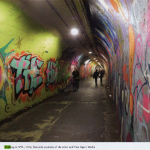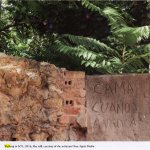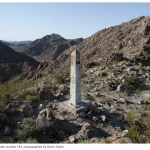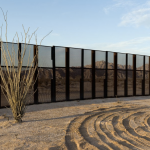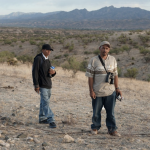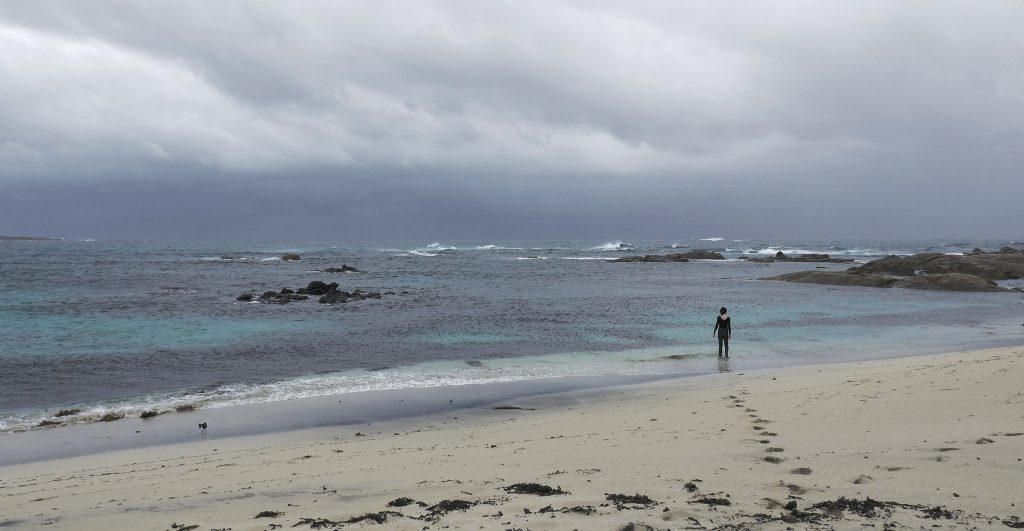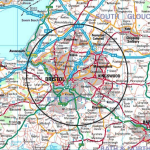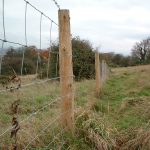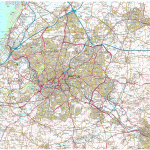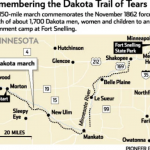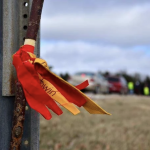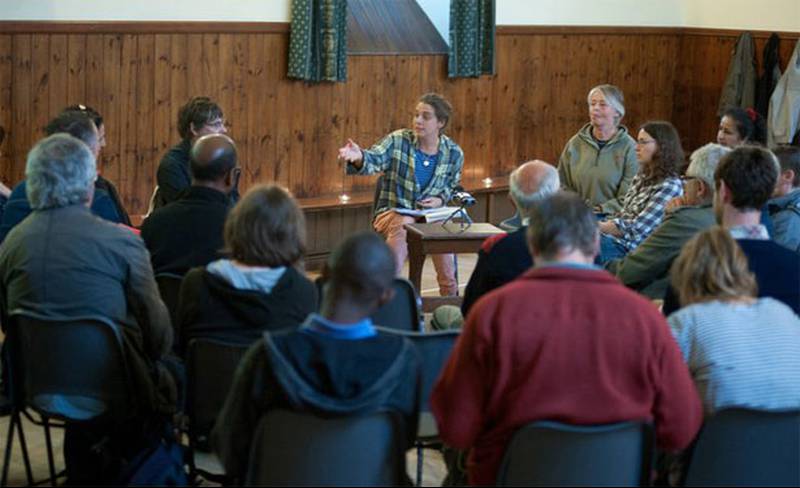
“A walk along the Scottish/English border to highlight restrictive visa policies for overseas artists, Artist Rocca Gutteridge and Claudia Zeiske undertook a walk along the Scottish/English border in reaction to the introduction of the Tier 5 visa policy for foreign artists on 5-7 August 2011.
UK Border Walk was a 77km walk along the English/Scottish border and included an Artachat discussion in the Romany town of Kirk Yetholm, the halfway point of the walk, about the detrimental effects of the new visa regulations for overseas artists. Both walk and talk highlighted and discussed the effects the Points Based System has for arts and cultural activities across our communities in the UK.
The UK Border Talk took place on Saturday 6th August in Kirk Yetholm, a small town along the border of Scotland and England. This was an open debate on the consequences of the PBS to UK cultural life. Speakers included visual artist Zineb Sedira, photographer Baudouin Mouanda, novelist Kamila Shamsie, artist/cultural commentator Nicholas Trench and Venu Dhupa, Director of Creative Development/Creative Scotland.
People had the option to join for:
- the whole walk (ca 37 km on 5/6 August and 40km on 7 August); very strenuous and full equipment required.
- all Sunday (ca 40km) very strenuous and full equipment required.
- 5km and back on the Sunday morning, returning to Kirk Yetholm ca 12pm. The UK Border Walk continued towards Hungry Law the next day; joined by many for the 5km for the 5 Tier policy walk despite appalling weather conditions.
What is PBS?
In autumn 2008 the UK introduced a new points based system (PBS) for managing migration to the UK. The regulations have led to a restriction of non-European artists’ ability to come to the UK at the invitation of arts curators, promoters and artists. UK hosts are now required to be licensed sponsors if they wish to invite visiting artists. This has regulated the relationship between international artists and UK hosts from one of convivial artistic exchange, collaboration and cultural production to a contract which is excessively bureaucratic and treats international guest artists with suspicion and control. PBS has led to the cancellation of artists’ residencies, exhibitions, productions and performances across the UK. Many artists are refused visas while others are deported from UK airports because they were not sponsored.
For a full dossier of testimonials, petition to UK Government and media coverage visit the Manifesto Club’s website.
UK Border Walk is a partnership between: Deveron Projects, Artachat, Manifesto Club and ARTSADMIN. In collaboration with GASWORKS, Thami Mynyele Foundation and Edinburgh Arts Festival.” [credit]
